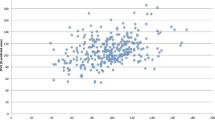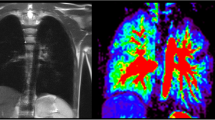Abstract
Lung function tests (i.e., spirometry, flow volume, and body plethysmography) were performed in 213 patients (age 6–21 years, mean 11.3 years) with hemodynamically significant congenital heart defects: atrial septal defect, ventricular septal defect (VSD), tetralogy of Fallot, aortic stenosis and coarctation of the aorta. We measured lung vital capacity, total lung capacity (TLC), residual volume (RV), the percentage ratio of the latter two measurements (%RV/TLC), maximal expiratory flow rates at 25% and 50% of vital capacity, and specific airway conductance. Pulmonary restriction dominated in patients with tetralogy of Fallot; pulmonary hyperinflation was more frequent in patients with VSD and coarctation of the aorta; and obstruction of the airways was observed most frequently in patients with tetralogy of Fallot. In conclusion, we found a range of pathologic lung function parameters in patients with hemodynamically significant congenital heart defects.
Similar content being viewed by others
Author information
Authors and Affiliations
Rights and permissions
About this article
Cite this article
Lubica, H. Pathologic Lung Function in Children and Adolescents with Congenital Heart Defects. Pediatr Cardiol 17, 314–315 (1996). https://doi.org/10.1007/s002469900068
Published:
Issue Date:
DOI: https://doi.org/10.1007/s002469900068




